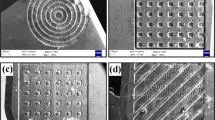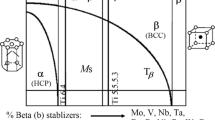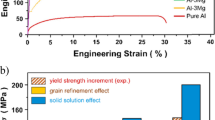Abstract
Helical milling is a new high-quality hole-making process which offers many advantages such as better chip transportation and lower cutting forces and cutting temperature than conventional drilling. This paper presents the mechanics and dynamics of helical milling process for nickel-based superalloy. Firstly, according to the kinematics and undeformed chip geometry of helical milling, a cutting force model which considers the variation of the axial depth of cut, the rounded corner effect, and the helix angle of the cutter is established. Next, on the basis of proposed cutting force model, the dynamic cutting forces of helical milling are calculated, and the stability of the operation is simulated with full-discretization method. Finally the cutting force and chatter stability models are validated by verification tests on a nickel-based superalloy GH4169 workpiece. The results show that the simulated cutting forces and chatter stability lobes agree with the measured data well and it is feasible to replace the conventional drilling with helical milling when machining the nickel-based superalloy.











Similar content being viewed by others
References
Sharman ARC, Amarasinghe A, Ridgway K (2008) Tool life and surface integrity aspects when drilling and hole making in Inconel 718. J Mater Process Technol 200(1):424–432
Herbert CRJ, Kwong J, Kong MC, Axinte DA, Hardy MC, Withers PJ (2012) An evaluation of the evolution of workpiece surface integrity in hole making operations for a nickel-based superalloy. J Mater Process Technol 212(8):1723–1730
Shan YC, He N, Li L, Zhao W, Qin XJ (2011) Orbital milling hole of aerospace Al-alloy with big pitch. Trans Tianjin Univ 17(5):329–335
Olvera D, de Lacalle LNL, Urbikain G, Lamikiz A, Rodal P, Zamakona I (2012) Hole making using ball helical milling on titanium alloys. Mach Sci Technol 16(2):173–188
Iyer R, Koshy P, Ng E (2007) Helical milling: an enabling technology for hard machining precision holes in AISI D2 tool steel. Int J Mach Tools Manuf 47(2):205–210
Zhao Q, Qin XD, Ji CH, Li YH, Sun D, Jin Y (2015) Tool life and hole surface integrity studies for hole-making of Ti6Al4V alloy. Int J Adv Manuf Technol 79(5–8):1017–1026
Brinksmeier E, Fangmann S, Meyer I (2008) Orbital drilling kinematics. Prod Eng 2(3):277–283
Wang J, Yip-Hoi D (2009) Analytical calculation of cutter/workpiece engagements for helical hole milling. ASME 2009 international design engineering technical conferences and computers and information in engineering conference, pp 453–462
Denkena B, Boehnke D, Dege JH (2008) Helical milling of CFRP–titanium layer compounds. CIRP J Manuf Sci Technol 1(2):64–69
Denkena B, Nespor D, Rehe M, Dege JH (2011) Process force prediction in orbital drilling of TiAl6V4. 9th international conference on advanced manufacturing systems and technology, 16–17
Wang HY, Qin XD, Wang Q (2012) Prediction of cutting forces in helical milling process. Adv Mater Res 215(9–12):9–13
Wang HY, Qin XD (2015) A mechanistic model for cutting force in helical milling of carbon fiber-reinforced polymers. Int J Adv Manuf Technol 82(9–12):1485–1494
Rey PA, Ledref J, Senatore J, Landon Y (2016) Modelling of cutting forces in orbital drilling of titanium alloy Ti-6Al-4V. Int J Mach Tools Manuf 106:75–88
Li ZL, Ding Y, Zhu LM (2017) Accurate cutting force prediction of helical milling operations considering the cutter runout effect. Int J Adv Manuf Technol 92(9–12):1–12
Sadek A, Meshreki M, Attia MH (2012) Characterization and optimization of orbital drilling of woven carbon fiber reinforced epoxy laminates. CIRP Ann Manuf Technol 61(1):123–126
Li ZQ, Liu Q, Ming XZ, Wang X, Dong YF (2014) Cutting force prediction and analytical solution of regenerative chatter stability for helical milling operation. Int J Adv Manuf Technol 73(1–4):433–442
Altintas Y (2012) Manufacturing automation: metal cutting mechanics, machine tool vibrations, and CNC design, 2nd edn. Cambridge University Press, New York
Budak E, Altintas Y, Armarego EJA (1996) Prediction of milling force coefficients from orthogonal cutting data. J Manuf Sci Eng 118(2):216–224
Ding YE, Zhu LM, Zhang XJ, Ding H (2010) A full-discretization method for prediction of milling stability. Int J Mach Tools Manuf 50(5):502–509
Farkas M (1994) Periodic motions. Springer-Verlag, New York
Budak E, Altinatas Y, Armarego EJA (1996) Prediction of milling force coefficients from orthogonal cutting data. J Eng Ind 118:216–224
Shang S, Qin XD, Li JH, Li SP, Li H, Huang T, Jin Y, Sun D (2018) Modelling of cutting forces and researching calibration method in helical milling. Int J Adv Manuf Technol 94(5–8):2949–2960
Funding
This work was supported by the Key Research and Development Program of Shandong Province, China (2018GGX103043).
Author information
Authors and Affiliations
Corresponding author
Additional information
Publisher’s note
Springer Nature remains neutral with regard to jurisdictional claims in published maps and institutional affiliations.
Rights and permissions
About this article
Cite this article
Wang, C., Zhao, J. & Zhou, Y. Mechanics and dynamics study of helical milling process for nickel-based superalloy. Int J Adv Manuf Technol 106, 2305–2316 (2020). https://doi.org/10.1007/s00170-019-04793-w
Received:
Accepted:
Published:
Issue Date:
DOI: https://doi.org/10.1007/s00170-019-04793-w




